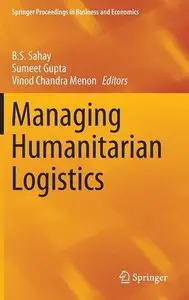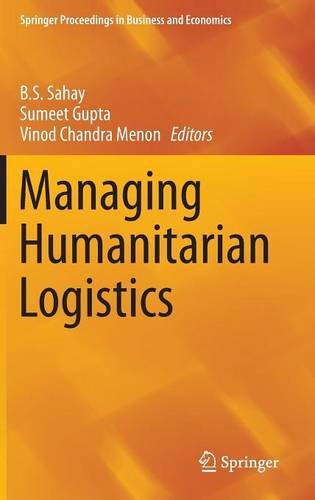Managing Humanitarian Logistics
Springer | Business & Management | October 12, 2015 | ISBN-10: 8132224159 | 311 pages | pdf | 6.4 mb
Springer | Business & Management | October 12, 2015 | ISBN-10: 8132224159 | 311 pages | pdf | 6.4 mb
by B.S. Sahay (Editor), Sumeet Gupta (Editor), Vinod Chandra Menon (Editor)
Provides an overview of key humanitarian logistics issues including delivering appropriate supplies, in good condition, in required quantities, and at the required place and time
Explores humanitarian supply chain management processes in connection with the increasing complexity and magnitude of global emergency relief operations
Outlines the roles and responsibilities of academia, international relief agencies, NGOs and government organizations to equip business leaders with the skills and knowledge needed to manage in unpredictable settings
From the Back Cover
This book discusses emerging themes in the area of humanitarian logistics. It examines how humanitarian logistics and supply chains play a key role, focusing on rapidly delivering the correct amount of goods, people and monetary resources to the locations needed to achieve the success of relief efforts in response to global emergencies such as flood, earthquakes, wars etc. With an increase in the frequency, magnitude and impact of both natural and manmade disasters, effective delivery of humanitarian aid is an issue that is becoming increasingly important in the context of disaster management. The book focuses on how logistics systems and supply chains responsible for delivering this aid from origin to recipients can be made more effective and efficient. It also discusses how the development of information technology systems that can provide visibility to the disaster relief supply chain marks a huge step forward for the humanitarian sector as a whole. As more organizations begin to adopt and implement these systems and visibility is established, the use of key performance indicators will then become essential to further enhance the efficiency and effectiveness of these supply chains.
About the Author
B.S. Sahay is Founder Director, Indian Institute of Management (IIM) Raipur. Prior to joining IIM Raipur, he served as director of reputed Indian institutes such as Management Development Institute (MDI), Gurgaon, and Institute of Management Technology (IMT), Ghaziabad. Dr. Sahay has obtained his Ph.D. from Indian Institute of Technology Delhi. He has been to Germany (1997) and Japan (1994) under Fellowship Programmes. His teaching, research and consulting interests include logistics and supply chain management, productivity management, business modelling, higher education & accreditation. Dr. Sahay serves on the Editorial Board of journals such as International Journal of Logistics Management, Supply Chain Management: An International Journal,Business Process Management Journal to name a few. He has authored six books and edited thirteen books in the area of supply chain management, world class manufacturing, total quality management
and productivity management. He is a recipient of the IIT Delhi Alumni Association Award and Distinguished Alumnus award
Number of Illustrations and Tables
51 illus.
Topics
Production / Logistics
Social Work
Operation Research / Decision Theory
Public Administration
Services



